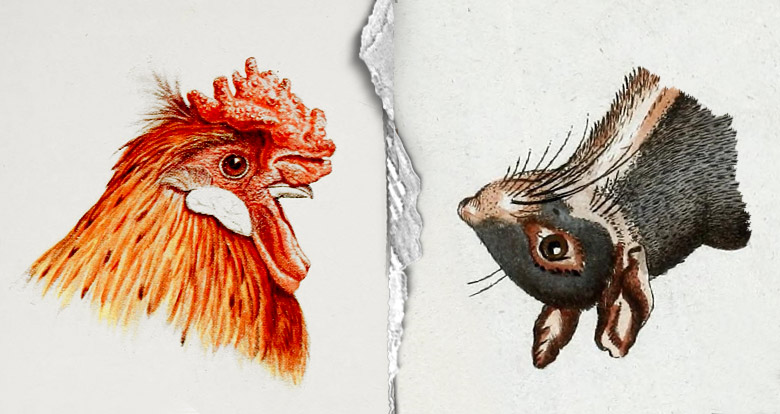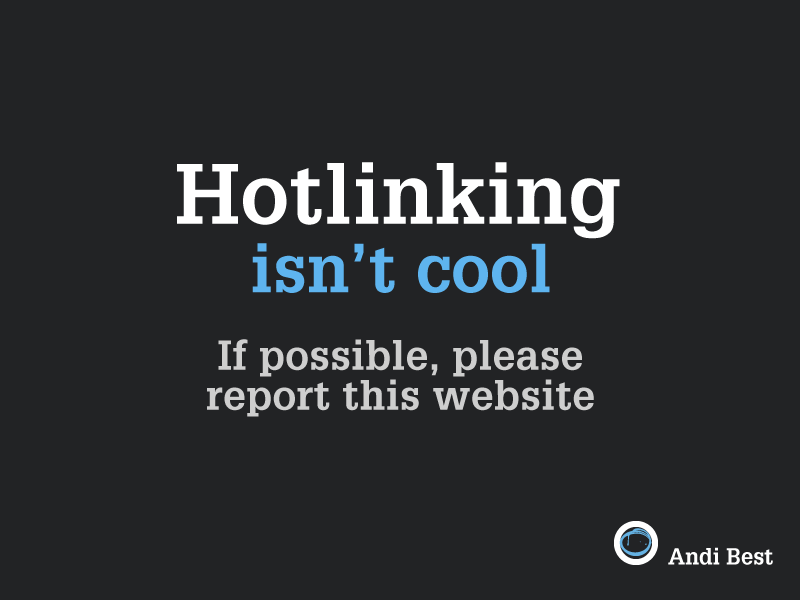Squirrels vs Chickens
- Published 04-05-2021
- Share

When designing a new logo at what point do you first demonstrate progress to your client?
A little debate bubbled up on Instagram the other day and I decided to broaden it on Twitter and Facebook where my brand design contemporaries reside, to learn what the general consensus was.
Graphic designer George Bokhua shared a composite of scamps (in a now deleted post) he'd put together for a logo brief he had to pull off in a pinch. It was because of the tight turn around that the designer chose to share the initial pencil thumbnails with the client, citing in the Instagram post that he'd never normally work in this way and only did so to rule out early ambivalence from the exchange. The resulting comments under the post produced two camps of ostensibly opposing views on the practice: those who wouldn't dream of sharing their rough process work with their clients favouring instead to make their first digital renders the initial client touch point, and those who are indeed candid about their early sketch work, factoring it into the client's decision making process. It's important to note this second camp were in the minority.
The polls and conversation on the matter held on my own social posting garnered the same divide, again with the non-disclosure camp prevailing in volume. Approximately 85% of those contributing to the discussion were in favour of not disclosing their process sketches to the client.
Graphic designer George Bokhua shared a composite of scamps (in a now deleted post) he'd put together for a logo brief he had to pull off in a pinch. It was because of the tight turn around that the designer chose to share the initial pencil thumbnails with the client, citing in the Instagram post that he'd never normally work in this way and only did so to rule out early ambivalence from the exchange. The resulting comments under the post produced two camps of ostensibly opposing views on the practice: those who wouldn't dream of sharing their rough process work with their clients favouring instead to make their first digital renders the initial client touch point, and those who are indeed candid about their early sketch work, factoring it into the client's decision making process. It's important to note this second camp were in the minority.
The polls and conversation on the matter held on my own social posting garnered the same divide, again with the non-disclosure camp prevailing in volume. Approximately 85% of those contributing to the discussion were in favour of not disclosing their process sketches to the client.
Every designer will have developed their own blend of business and creative practices in accordance with what feels comfortable for themselves and what they've discovered yields quality results for their clients, so this post isn't seeking to champion a single approach. What interests me is a designer's motivation behind sharing, or not sharing, those first pencil noodlings and more generally, what does a brand discovery process look like?
Those against
A few designers I spoke with regarded the sketch process as purely transient and procedural, not worthy of client scrutiny at all. "My sketch pages end up dog-eared and scribbled on" says designer Grace Abell, implying just such an impermanence.
Responses from other designers implied an undercurrent of embarrassment; that the efforts instilled in cultivating a professional and expert demeanour in a business relationship would be wholly undermined if the client were allowed to peak behind the curtain and take stock of all the malformed, half-baked manifestations which they may mistakenly believe they were parting with cash for. It is embarrassing, frustrating even, if a client formulates sour opinions of a work before it fully reflects the intent of the creator - that's why the restaurant kitchen is out the back, the audience tends not to view the dress rehearsals, and television shows are edited in post long after the storyboards are drafted.
Responses from other designers implied an undercurrent of embarrassment; that the efforts instilled in cultivating a professional and expert demeanour in a business relationship would be wholly undermined if the client were allowed to peak behind the curtain and take stock of all the malformed, half-baked manifestations which they may mistakenly believe they were parting with cash for. It is embarrassing, frustrating even, if a client formulates sour opinions of a work before it fully reflects the intent of the creator - that's why the restaurant kitchen is out the back, the audience tends not to view the dress rehearsals, and television shows are edited in post long after the storyboards are drafted.
Poor communicative influence (of the sketches themselves, not the overall logo concept) was the second case designers made for excluding sketch work from client viewing. As Bokhua goes on to note in a further post (also now deleted), the efficacy of the scribbled visions was short-lived; key members of the client team were unable to draw enough clarity from them to proceed with any of them, forcing the timeline forward to digital renders anyway. It was asserted by other designers that disclosing sketch work will always encourage this fruitless step of the journey and is therefore best avoided.
A third view presented by some designers was borne from how they structure their branding agreements. The first client touch-point for presenting creative work is so far down the line, and so far beyond the initial rounds of briefing, research and discovery, that the work is near enough fully formed and deemed to be as close to the super solution to the problem as possible. Sketches are totally left in the dust here, as mood boards and digital renders to do all the heavy lifting.
"I'm at a point in my design practice where I don't want to waste time presenting more than one logo proposal" says designer Sonia Gazzelloni, who channels all energy towards generating the perfect outcome.
"I'm at a point in my design practice where I don't want to waste time presenting more than one logo proposal" says designer Sonia Gazzelloni, who channels all energy towards generating the perfect outcome.
Those for
On the minority side of the fence a few designers expressed how sketch work is always the first thing on the client's table. How polished these sketches are wasn't asserted in the chatter but certainly no design software is engaged by this group before the client is encouraged to iterate over the ideas presented. The objective of this approach is to mitigate ambiguity about where the project is heading early on. If clients were roundly creative people they'd not be in the market for a brand developer. They may have a vision but likely not the skills to execute rendering it or the language to convey it. Both parties may exit their initial meetings with a clear understanding of the practical and conceptual objectives but the eventual visualisation, subjective as it is, may not align with the client's preconceived ideas, potentially causing friction.
Some clients may even specifically request to see multiple ideas when briefing the job, so that they can make an informed decision about the direction they want to take. By offering multiple touch points of insight, starting as early as the first formed roughs, the client retains some semblance of command over the project, giving them peace of mind that good work is being done behind closed doors. "Gone are the days when you could say 'it'll be thirty grand and I'll call you when I'm ready'" quips Michael Johnson in this terrific breakdown of branding development.
Be cautious warns Tom Froese, an illustrator who believes it's too risky to work up a single final piece ahead of running his sketches by the client. He stresses the importance of preparing multiple concepts (which is arguably easier to achieve for illustration than branding) and in so doing asserts a professional authoritative dynamic to the process. "...we need to be in control of our own process. We don't want the client calling the creative shots, because at a certain point, they will lose trust in our abilities, and we'll lose ownership of the work."
Be cautious warns Tom Froese, an illustrator who believes it's too risky to work up a single final piece ahead of running his sketches by the client. He stresses the importance of preparing multiple concepts (which is arguably easier to achieve for illustration than branding) and in so doing asserts a professional authoritative dynamic to the process. "...we need to be in control of our own process. We don't want the client calling the creative shots, because at a certain point, they will lose trust in our abilities, and we'll lose ownership of the work."
My approach
I too believe there is never only a single, perfect solution to satisfy a logo brief and when I first showcase creative concepts to a client I will include curated sketch work as part of the presentation. Faxing over every sheet of paper my pencil ever wandered across as part of the discovery process is a little irresponsible and courts danger. On supplying too many design concepts designer David Airey writes "You can almost guarantee that some or all of the ideas that you know are worth developing are ditched."
By curating the rough work I include in my presentations I believe I give credence to the subsequent rendered drafts that feature on the latter pages. For me, being candid about what informed the concepts on the table constitutes part of the brand story. The first scribblings on paper do hold value, but that value shifts with context. In isolation - which is never how a client would view them - these outlines are milestones of progress; of exploring my own thoughts and reasoning and therefore are only of significance to myself. But alongside the first renders they help illustrate the full critical thinking behind what's been designed and that offers greater value to the client.
I'm pretty much on the fence in this particular 'debate'. I don't simply hand over my chicken scratch, but I don't squirrel it away either. That's my personal approach, and the conversations I've had with other designers inspiring this post revealed no pervasive formula for the ideal delivery process.
Some don't do mood-boards. Some focus on just one design. Some work in collaboration with the client. Some draw the curtains until the big reveal.
Some don't do mood-boards. Some focus on just one design. Some work in collaboration with the client. Some draw the curtains until the big reveal.
And some show their sketches, some don't.
Want to read blog updates as they're published? Sign up to my newsletter for blog update alerts. Join my newsletter

 T-shirt challenge
T-shirt challenge